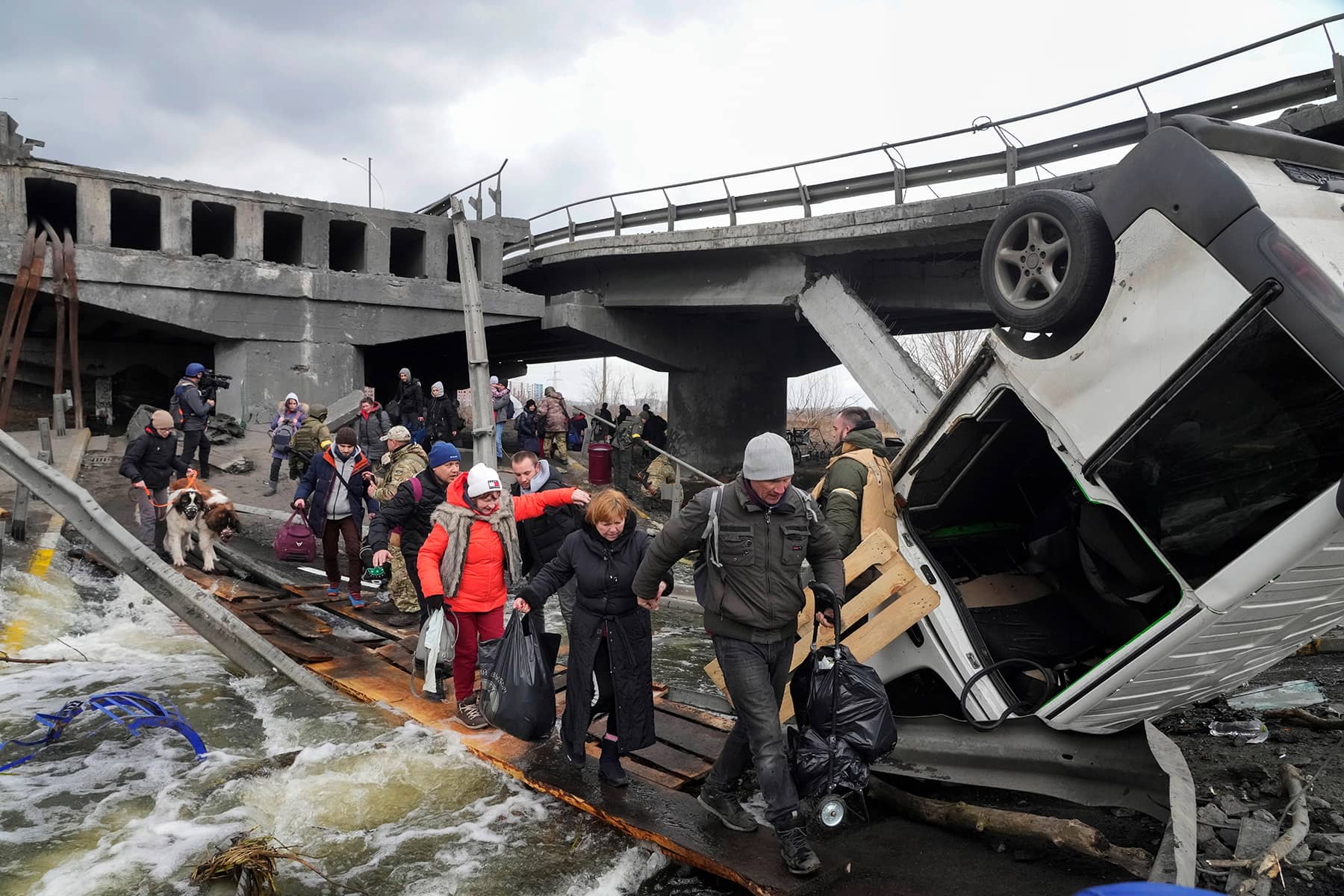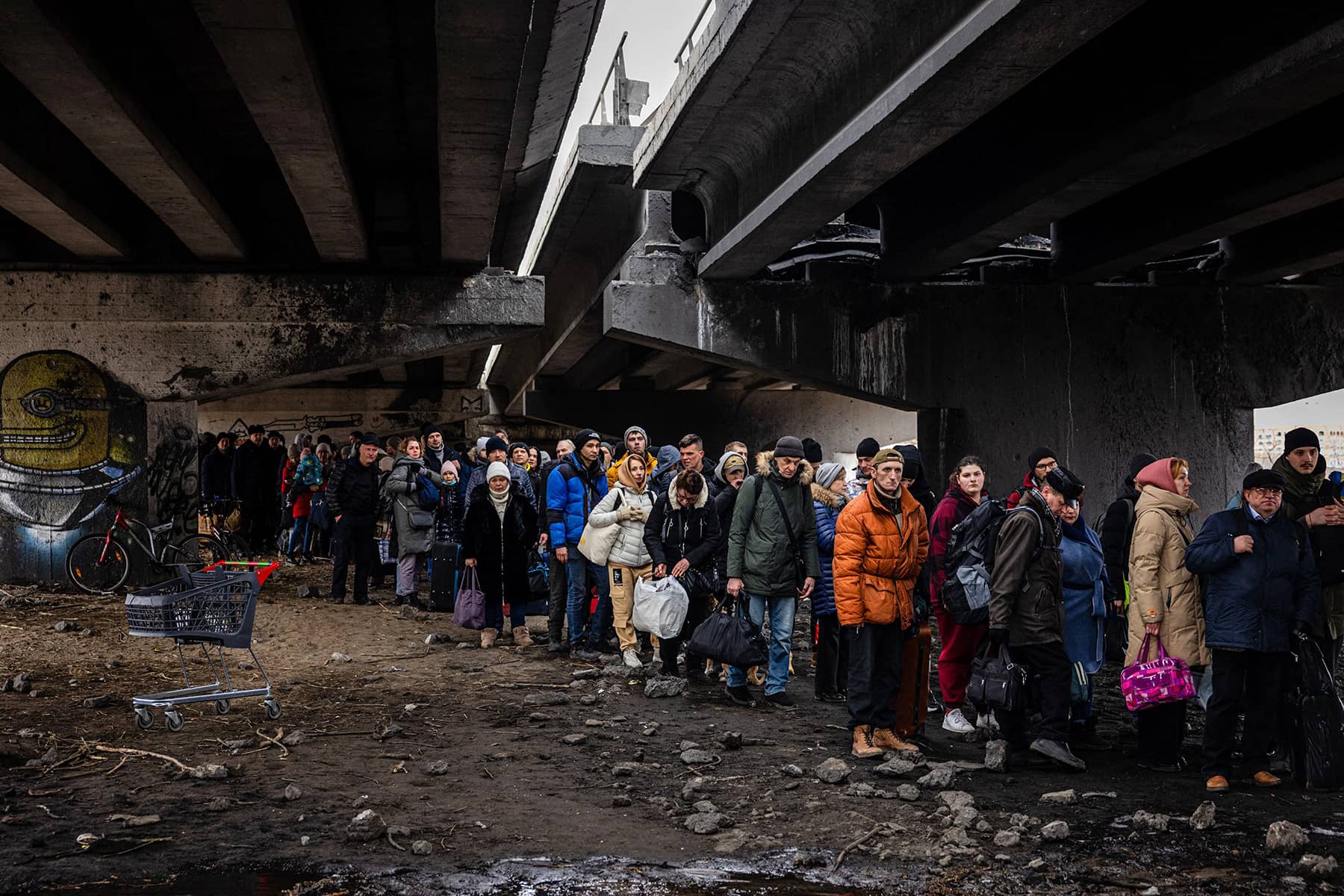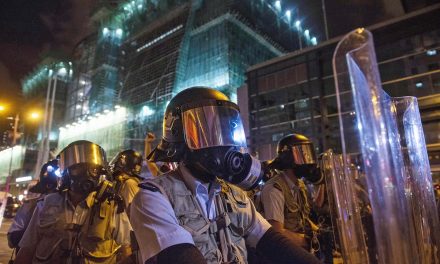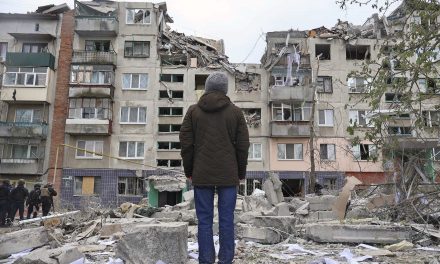
By Kirsten Gelsdorf, Professor of Practice and Director of Global Humanitarian Policy, Batten School of Leadership and Public Policy, University of Virginia, University of Virginia; and Jacob Kurtzer, Director and Senior fellow, CSIS Humanitarian Agenda, Georgetown University
As Russia continues to target houses, apartment buildings, hospitals and civilians in Ukraine, there are mounting calls from international aid groups to safely evacuate and protect Ukrainians caught in the war.
Simultaneously, rising numbers of people still in Ukraine are in desperate need of food, medical supplies, water and other lifesaving materials. Russia and Ukraine have discussed what are called “humanitarian corridors” during negotiations. These are meant to allow civilians trapped in dangerous cities to leave, with the assurance that they will be safe while evacuating. They are also often used to ensure the safety of aid workers and conveys delivering aid.
An estimated 35,000 Ukrainians were evacuated through such pathways on March 9 alone, according to Ukrainian President Vlodymyr Zelenskyy. But these corridors remain unreliable transit points in Ukraine. Russia has repeatedly attacked civilians traveling these routes. More than 2 million Ukrainians have left the country since the start of the war.
As experts on international humanitarian policy and relief efforts, our experience shows that while humanitarian corridors could create safe exit routes out of besieged cities – and allow aid to reach people within Ukraine – they are only part of the solution to protecting civilians during war.
That is because these routes rely on all warring parties to respect the corridors as protected spaces. In the worst case, humanitarian corridors can be manipulated to do even more harm by exposing fleeing civilians – who trust and believe they are safe – to further attack.
Safe zones, safe passage
Humanitarian corridors, sometimes referred to as safe zones, or safe corridors, are routes in conflict zones that are supposed to ensure the safe passage of people and materials. In practice, humanitarian corridors mean different things in different political contexts and conflicts. They can be roads where civilians can travel, but planes are not permitted to fly overhead. They sometimes connect people from one point to another within a country, or across country borders.
They generally exist for a specific time period, extending from mere hours to months. Warring parties agree to set up and respect these corridors for strictly humanitarian – not political – purposes. Third parties, like the United Nations, or another country involved in the conflict, may also play a role in establishing humanitarian corridors.
But in order for humanitarian corridors to succeed in keeping people safe and healthy, they need to be accompanied by cease-fires, security guarantees and diplomatic trade-offs.
This requires confidence that all parties to a conflict will not target civilians or aid workers traveling these paths. But, as in the current Ukraine war, this doesn’t always happen. Despite Russia’s promises to set up humanitarian corridors, it is targeting and killing civilians trying to leave Ukraine or leave besieged cities.
Because of this, emergency relief experts like ourselves sometimes view humanitarian corridors with great caution. We see them not as the only choice, but as part of broader efforts to help civilians caught in a crisis.
Where humanitarian corridors have been used
Humanitarian corridors were used in World War II, when children were evacuated from Nazi-controlled territory by trains to the United Kingdom. More than 40 years later, the U.N. helped set up “corridors of tranquility” during the second Sudanese Civil War. These corridors helped the U.N. transport essential supplies to civilians.
The U.N. first mandated peacekeeper-controlled humanitarian corridors during the Bosnian War between 1992 and 1994, to provide civilians in Sarajevo with lifesaving supplies. The U.N. also used its peacekeepers to protect “safe areas” for civilians within Bosnia. But these areas failed to keep people safe when the Bosnian Serb army murdered and raped thousands of non-Serb, Muslim women inside those areas.
Sometimes, warring parties do not agree to set up humanitarian corridors. Humanitarian organizations requested civilian corridors in Iraq in 2003 to reach civilians. They again asked Iraq and the Islamic State to establish corridors in 2014. But humanitarian corridors were not established during those conflicts.
Humanitarian corridors in Ukraine
Russia’s opening position in talks with Ukraine has given international negotiators serious pause about Russia’s intentions and underlying ambitions. For example, Russia declared a cease-fire on March 5, 2022, to evacuate civilians from Mariupol and Volnovakha, two cities under siege in Ukraine. But Russia’s announcement did not ensure people’s safety.
Russia and close ally Belarus offered Ukrainians another safe escape route on March 7, 2022. Under this plan, people from Kyiv and Kharkiv, Ukraine’s second-largest city, could cross to Belarus or Russia. A spokesperson for Zelenskyy said the Russian proposal, which Ukraine rejected, was “completely immoral.”
Zelenskyy has also questioned whether humanitarian corridors actually exist in Ukraine. When international relief workers tried to leave Mariupol along the agreed-upon route, alongside civilians, on March 6, 2022, they soon realized “the road indicated to them was actually mined,” Dominik Stillhart, director of operations for the International Committee of the Red Cross, told the BBC. Zelenskyy has continued to press for secure humanitarian corridors.
“There was a lot of talk about humanitarian corridors,” Zelenskyy said in a March 6 video address. “There were talks every day about the opportunity for people to leave the cities where Russians came. But there are no humanitarian corridors. Instead of humanitarian corridors, they can only make bloody ones.”
Russia again agreed to six humanitarian safe passage routes on March 9, 2022. But Russia has continued to target civilians as they leave Ukraine. Meanwhile fighting in Ukraine continues, and Ukrainian civilian deaths – topping at least 549, including 41 children – rise each day.
Russia’s bad record
Some experts say that Russia’s involvement in the Syrian conflict could offer a window into its Ukraine war strategy. Russia offered humanitarian corridors for civilians to leave Ghouta, Syria, in 2018, amid heavy fighting. But the different conflict parties, including the Syrian government and various domestic opposition groups, did not jointly agree to these corridors, and international organizations like the U.N. did not monitor them. Few civilians actually traveled those routes.
Russia also has a history of targeting and attacking health care and other civilian facilities in Syria, for example, even after humanitarian organizations announced the location of these places and passageways.
Part of the solution
While humanitarian corridors are often talked about, they have not regularly been able to ease the safe passage of large numbers of civilians or aid supplies during war. There also has not been extensive research on using humanitarian corridors, or what can make them effective.
As the war presses on, Ukrainian civilians need assurances of safety. But history shows us that both diplomatic and humanitarian strategies aimed to assist in a crisis can sometimes do additional harm. Above all, the priority has to be ensuring the safety of all individuals caught in a crisis, and ultimately an end to the fighting.
Еfrеm Lukаtsky and Dіmіtаr Dіlkоff
Originally published on The Conversation as Humanitarian corridors could help civilians safely leave Ukraine – but Russia has a history of not respecting these pathways
Support evidence-based journalism with a tax-deductible donation today, make a contribution to The Conversation.















